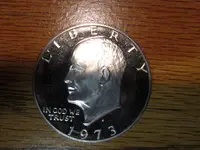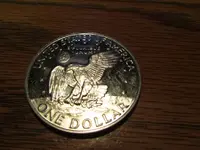"Proof" is a method of manufacture, not a quality. A proof coin is stamped with higher pressure, perhaps multiple times, using dies and a blank that are specially polished and maintained. This is a proof coin, and it could even be a proof 60 or more. It could even be a proof 55 or even a proof 45 (Just because it was in circulation does not mean that it has EVIDENCE of wear. It is the EVIDENCE of wear that makes something circulated or the lack of that evidence that makes it uncirculated). In 1895, in Philadelphia, they made ONLY proof coins, so there are some Proof G-4 coins out there. There is no Evidence that it is proof except that it has the identifying marks of the proof dies, and there were no Regular issues of that date known.
Not all S coins are 40%. There were also regular material proofs that were made for Proof Sets. The 40% coins were only Ike dollars issued in a special holder.
Finger prints are sticky business. Warm Soapy water will remove the oils that can stain a coin. If the coin is already stained, there is nothing you can (nor should) do about it. after washing in warm soapy water, rinse very very well, then pat dry in a soft cotton cloth. Rubbing will scratch the surface.
 I know everyone likes pics, these are the best I could do. Also, is there a safe cleaning method to remove the finger oil fingerprints?
I know everyone likes pics, these are the best I could do. Also, is there a safe cleaning method to remove the finger oil fingerprints?


